Location:
PMKI > Project
Controls 3.0.


Project Controls 3.0 (PC-3.0) is designed to build onto
the existing developments in project management and
project controls to:
- Overcome the problems apparent in the current
diverse range of project management and
controls practices,
- Implement a simple, robust system that is
effective for all types of project delivery,
and
- Refocus the controls effort on helping management
craft success, rather than report on history.
- Project Controls 3.0 -
Overview
- PC-3.0
Driving Philosophy
- PC-3.0
Structure
- Implementing
PC-3.0
- Work Units
- PC-3.0
Key Concepts and Definitions
- Useful Papers &
Resources
- PC-3.0 Work Performance
Management (WPM)
- PC-3.0 Contract
Management
- Useful External Web-links &
Resources.
Other related sections of the PMKI:
- Traditional Project Controls
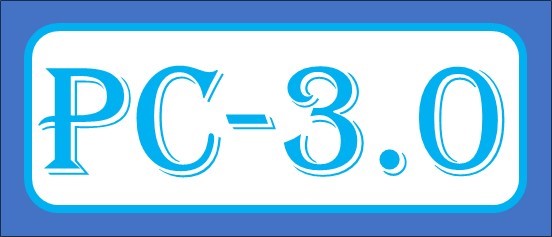 PC-3.0
is designed to simplify project controls, remove
unnecessary details and focus on timely information that
is accurate enough to be useful. Excessive detail and
delay destroy the value of a project controls system.
Pragmatic decision-making needs useful information at the
right time, rather than precisely accurate, detailed
information when it is too late. PC-3.0 recognizes the
overall objective of a project is set, and often defined
in a contract. However, successfully achieving the
objective required adaptability in the face of uncertainty
and changed circumstances.
PC-3.0
is designed to simplify project controls, remove
unnecessary details and focus on timely information that
is accurate enough to be useful. Excessive detail and
delay destroy the value of a project controls system.
Pragmatic decision-making needs useful information at the
right time, rather than precisely accurate, detailed
information when it is too late. PC-3.0 recognizes the
overall objective of a project is set, and often defined
in a contract. However, successfully achieving the
objective required adaptability in the face of uncertainty
and changed circumstances.
PC-3.0 has been designed to be effective!
- You can plan the overall project in any way the
project team see as appropriate.
- The breakdown into Work Units is within the agree
overall planning framework.
- The control program maps the interfaces between
the WUs and sets the overall project duration.
- How you plan and manage each WU is up to the team
running the work.
- What PC-3.0 measures is productivity, are you
doing enough within the WUs in progress and if
not, what are you going to do about it?
- The current rate of progress is reflected in the
projected completion of the WU and its impact
on the control program.
- At the project level, the same question – what are
you going to do to overcome a slippage or lock
in a gain?
The core elements of Controls 3.0 are:
PC-3.0 is designed to fit any size of project and adapt
to any management methodology. It offers a consistent,
robust approach to project controls focused on driving a
successful project outcome.
Watch the webinar (approx. 47 minutes) for a complete
overview:
Blg: Problems with Project Controls summarizes the current set of problems and issues affecting project controls and identifies the need for PC-3.0 to improve project outcomes.
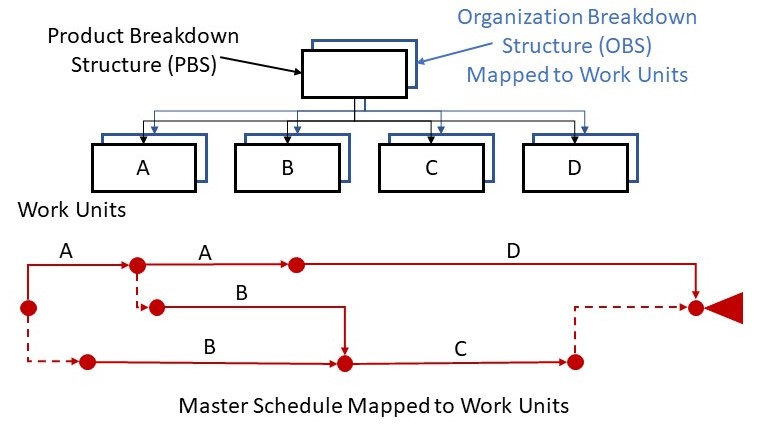
The philosophy driving PC-3.0 is pragmatic decision-making needs useful information at the right time. This requires a simplified project controls approach focused on:
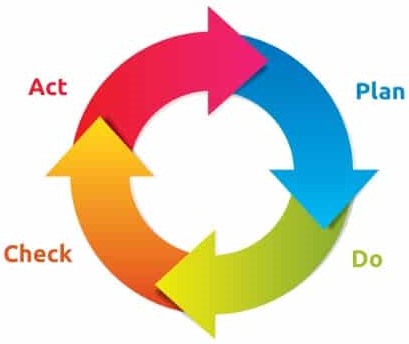 You
cannot change history, but proactive management can change
the future. The elements of PC-3.0, at the assessment date
are based on the PDCA cycle:
You
cannot change history, but proactive management can change
the future. The elements of PC-3.0, at the assessment date
are based on the PDCA cycle:
PC-3.0 is designed to provide a consistent and repeatable controls function to support the successful delivery of most projects. To be used effectively three elements of the project need to be agreed and understood:
The management control point in a PC-3.0 project is the individual Work Units (WU). Each WU will typically be:
Generally, the project’s management structure (OBS) should mirror its product (or work) breakdown structure (PBS) both of which should focus on producing the deliverables required to achieve the project’s objectives.
Each integrated project team (IPT) or WU Manager is empowered to manage the delivery of their WU including making decisions within defined parameters to ensuring the product is completed on time and complies fully with scope, quality, and technical requirements. Where a decision affects another WU recommendations are raised to the next level of management for approval.
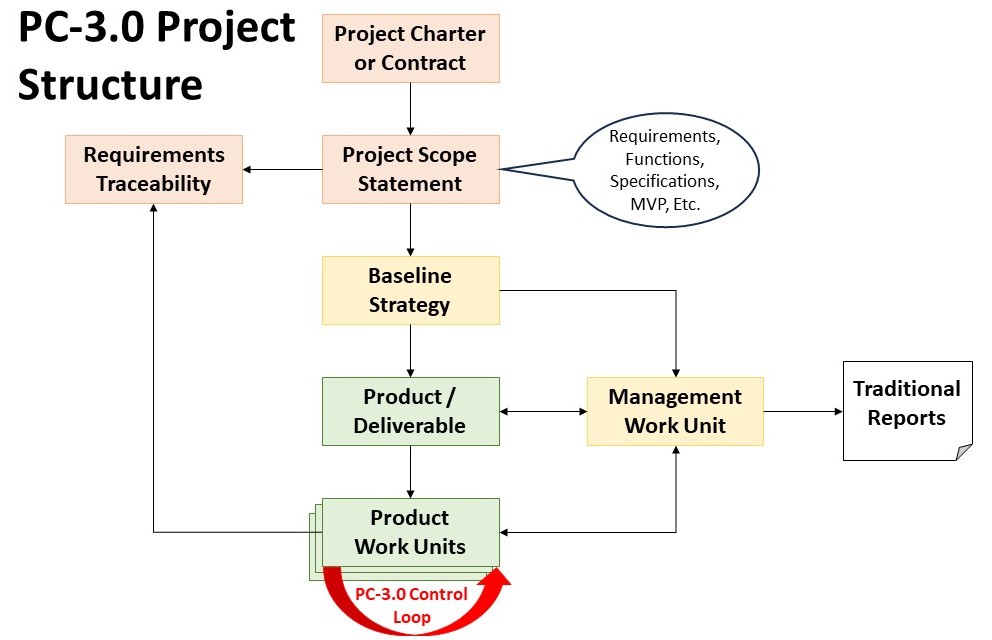
The core steps to implement PC-3.0, once the project's objectives have been set, are:
Project control and reporting is exercised at the WU level. The PC-3.0 information on progress and predictions should be available to the WU management within one or two days of the end of the reporting period, allowing the corrective actions to be decided and implemented within a week (the controls information should not be a surprise). Cost, EVM, and other reports should be aligned with the WUs, but are likely to still require several weeks to obtain the information and be processed.
* Esoteric detail months or years in advance of the
actual work help no one! For more on this see:
Blg:
Project controls do not determine the future
looks at why esoteric detail is detrimental to overall
projects success, short term work should be planned in
adequate detail. Future work only requires a sensible
budget to show the overall strategy (see also Rolling
Wave and Schedule Density).
The WU is the core element in PC-3.0. In many respects a WU is similar to:
The primary difference between a WU and other project breakdowns is its size and management accountability. Each WU should be big enough to be managed, but small enough to overcome, or quarantine any problems that arise. As with other project breakdowns, the full scope of the project should be included in the WUs. This means there is likely to be at least one WU that has no product deliverables, but includes the general management of the overall project and any supporting functions. The other WUs should include all of the work required to deliver the output, including the direct management of each WU.
In most cases each WU will cover a complete area, or
phase of work, minimizing the number of interfaces to
other WUs. The exception is some project wide systems that
need to function as a single entity, an example would be
power loading and balancing across a major industrial
complex. Generally, to the extent possible the physical
components (wiring, piping, etc.) should be included in
the WU they are physically a part of. However, the overall
design, management, and commissioning of the system is the
responsibility of a specialist WU. Where possible, this
type of interface should be managed by having a member of
the specialist WU team seconded to be part of each of the
IPTs responsible for the delivery of the WUs containing
the physical elements of work.
The key to PC-3.0 is using pragmatic controls information to inform proactive decision making within each WU. The two objectives being to enable other WUs to perform their work as intended, and to complete the current WU on time. If these two objectives are achieved efficiently, costs will be minimized.
The techniques used to manage each WU should be adapted to the needs of the work, the method chosen may include Agile, various disciplined approaches, Lean, CPM, or any combination of the foregoing, as agreed with the overall project management. The management approach used should be flexible and adaptive, responding to the current situation and focusing on achieving the required outcomes.
For example, if a detailed CPM schedule is being used to
manage a WU, after progress is recorded at each update,
the future work in the schedule needs to be to be
reorganized to the extent necessary to manage out of
sequence working, and properly allocate work to the
available resources. If necessary, the additional
capability needed to deliver the WU on time should be
obtained. Planning is proactive and adaptive focusing on
optimizing the completion of the WU rather than worrying
about what has occurred. In this situation the control
metric is 'activity days' as described in Using
WPM to augment CPM predictions.
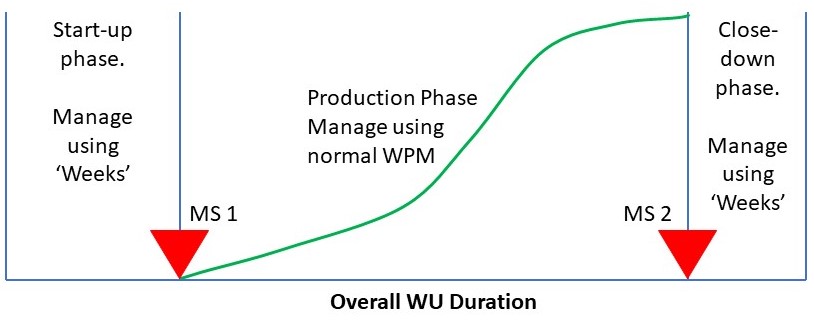
Some WU's may need different measurements for different phases of the work. In this example, a manufacturing WU, there is the start-up phase prior to the production of the first unit, the main production phase, and a close down phase. The main part of the work can be measured using the normal WPM processes. The other two phases may be relatively short and while in progress simply need an estimate to the end of the phase, or if longer, apply the WPM technique described in WUs Without a Simple Measure with 'weeks' as the metric.
While the management of each WU is expected to be dynamic, adaptive, and focused on achieving the WU’s objectives, the reporting requirements for each WU are standardized. The IPT running each WU is required to report on three key factors within 5 days of the end or the reporting period:
For each issue, the WU’s issues log should record the
issue’s: name / description / root cause / consequence /
key stakeholders (incl. other managers) / trend in list
position / time in the list / action diary (who – what –
when).
See more on Issues Management.
Work Performance Management (WPM) requires a defined metric to measure the quantity of work in each WU that is robust and unambiguous and focused on the progressive completion of work to minimize WIP. This can be different in each WU. The calculation of the time needed to complete the WU is based on the WPM principle that projects the current rate of performance onto the incomplete portion of the WU. This is not affected by the proactive and adaptive planning of future work. However, systems do need to be in place to keep the IPT honest and minimize the probability of error, this is helped by the simple rigor of WPM.
Blg: A focus on Work-Flow Little’s Law suggests that any increase in WIP automatically increases lead times! To borrow from Lean: WIP is a waste and needs to be minimized. This post explains the concept of queuing theory used in PC-3.0.
Blg: Multi-Tasking and the Bow Wave Effect From a scheduling perspective, the inevitable consequence of too much WIP is to require people to multi-task. If you do not have enough people to do all of the work, each person is will either be working on multiple tasks simultaneously or will abandon a partially complete task to start then next in response to management pressures. This is always a problem, but the focus on work completed in PC-3.0, will help management see through the problem.
IPT = Integrated Project Team - the people responsible for managing a WU.
PC-3.0 = Project Controls 3.0 - a new paradigm for successfully controlling the delivery of a project.
WPM = Work
Performance Management - the method used to assess status
and predicted completion
of each WU in progress.
WU = Work Unit - each WU is a management control point in a PC-3.0 project.
The terminology used for the data points in WPM is:
From this information, the work performance measures are calculated as follows:
Road Map: The time phased plan for accomplishing the WUs to achieve the overall project delivery strategy. The Road Map may be in the form of a CPM schedule, a bar chart or any other plan that sets the start and completion time for each WU.
Project Strategy: The overall control document for the project describing what work has to be accomplished (scope), how the work will be undertaken and managed (methodology or methodologies), and how completion is defined and measured (what done looks like).
Work Performance Management (WPM): A project controls methodology designed to calculate the current status, and predicted completion date of any project or WU in a consistent, repeatable, and defensible way, based on the ratio between the Work Planned, and Work Accomplished.
Work Unit (WU): Each WU is a self-contained component of the project being managed that is managed by a responsible person or IPT to achieve its deliverables on time. Togeter, the WUs cover 100% of the project scope and form the basis of the project's strategy and Road Map.
PP: Project Controls
3.0 (PC-3.0). The purpose of this paper is to
provide an overview of Project Controls 3.0 (PC-3.0).
PC-3.0 is designed to build onto the existing developments
in project management and project controls to:
1. Overcome the problems apparent in the current diverse
range of project management and controls practices,
2. Implement a simple, robust system that is effective for
all types of project delivery, and
3. Refocus the controls effort on helping management craft
success, rather than report on history.
This paper is in two parts, the first part looks at the
evolution of project controls and identifies some of the
current issues and challenges. The second is a brief
overview to introduce the concept of PC-3.0.
Download
the original June 2024 PMWJ article.
Prs: Baked In Optimism – Why so many projects fail. This presentation looks at two processes that are ‘baked into’ standard project management estimating and control to show how recommended good practices are still optimistically biased. When preparing an estimate good practice recommends using Monte Carlo to determine an appropriate contingency and the level of risk to accept, but the typical range distributions used are biased – they ignore the ‘long tail’. When reporting progress, the estimating bias should be identified and rectified to offer a realistic projection of a project outcome. Standard cost and schedule processes typically fail to adequately deal with this challenge meaning the final time and cost overruns are not predicted until late in the project. This presentation highlights some of the causes for these problems - View the webinar on our Risk Assessment Page.
PP:
Predicting Completion in Agile & Distributed
Projects. The focus of this paper is to offer
a practical solution to the challenge of assessing
progress and the likely completion date in agile and
distributed projects where the traditional concept of a
‘critical path’ simply does not exist. The paper describes
the current application of EVM and ES to this type of
project. It then introduces the concept of Work
Performance Management (WPM) as a robust and practical
alternative for determining the current status and the
predicted completion date for projects that are not using
EVM, and are not suited to the CPM paradigm. The
theoretical underpinnings of WPM are identified together
with the concept of ‘work units’ and the basis of the WPM
calculations.
Download
the original PMWJ article.